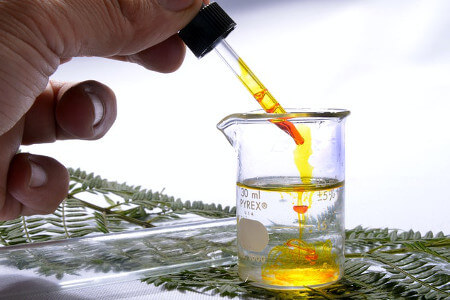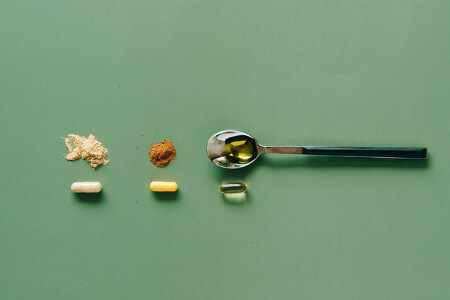
Moisture analysis is a key component of quality testing in domains ranging from construction to food production. The pharmaceutical industry is no exception, but how moisture content relates to medicine might not be intuitive. In this post, we’ll explain why moisture analysis is so important for the pharmaceutical field and how a moisture analyzer can help.
What’s the Difference Between Water Content Analysis and Moisture Content Analysis?
This may seem like a confusing and needless distinction, but there’s an explanation. First of all, moisture content is not necessarily water. While it’s usually a main component, some compounds include more specific liquids in order to work properly, as various chemicals have a wide variety of reactions to water.
Water content, meanwhile, only applies the quantity of water present in the sample. Moisture content also only applies to components in gas form, while water content includes both gas and liquid form. Moisture analysis tells us how wet or dry a sample is, while water content tells us how much water is in a sample, but not whether that makes the sample dryer or wetter. A sample can be made more moist by compounds that aren’t water, so it’s important to measure that as well as the amount of water. Because some compounds break down in water, even a cream or a syrup might need a specific base that keeps the chemicals bonded together, so a sample’s perceived liquidity does not necessarily correlate to its actual water content.
Water content is usually measured through titration, especially the famous Karl Fischer method. Moisture content, by contrast, is measured primarily through loss on drying, which essentially means the sample is weighed, then dried or heated, and then weighed again to measure the difference.

Why Use a Moisture Analyzer to Measure the Moisture Content of Pharmaceuticals?
Moisture analysis can be achieved through various means, including methods like oven or chemical titration. Ovens can reach high temperatures, but they can be clunky, imprecise and can burn samples quite easily. Chemical titration can struggle with components that contain little moisture to begin with, especially if the moisture involved is caused by liquids that are not mostly water. A moisture analyzer is compact, heats evenly and can accurately determine moisture contents with precision.
They can also allow more control over the heating process, which is essential for chemicals that can react to temperature or burn easily. For example, our PMB moisture analyzer offers three heating modes for a controlled drying process. These devices are also fast and allow for data communication to improve traceability and repeatability, which are the cornerstone of any laboratory work.
Why is the Moisture Content of Pharmaceuticals So Important?
Moisture is a key component of a compound’s texture and binding properties. For example, effervescent medication has to stay together in the package and not dissolve between the user’s fingers but must dissolve in a glass of water. If the product is a powder, the powder shouldn’t clump together, or it will not mix well. A tablet could be too sticky or crumble into dust, or a syrup too thick to swallow for some patients (or too watery and the patient needs to drink more to get the same effect).
Moisture is also important for production and distribution, as machinery and delivery systems are highly specialized. If syrup contains too much moisture, for example, it could leave residue in machines that could eventually clog them, causing an expensive breakdown. A tablet with too little moisture could crumble before being packaged.
Many reagents used in testing and titration react to water or moisture. If these components feature too much or too little moisture, they could lead to false positives or negatives, or indicate erroneous results. For example, a topical ointment should have its pH tested. If the strips were previously exposed to moisture and react to that pH in addition to the ointment’s, they could provide erroneous results that could indicate the product is safe for use on human skin when it is not. A drug or pregnancy test could indicate false results. Reagents could fail or react differently, leading to tests having to be redone. That can be costly, time-consuming and very frustrating or even dangerous for patients.
Because moisture analysis is so important, tests are conducted through every stage of the process, including packaging. It’s necessary to make sure that medicine will remain stable and resistant to water, dust or humidity ingress while still packaged, especially since most people do not use the full contents of a bottle or may have a long-term prescription.

How Does Moisture Affect the Stability of Medicine?
As we’ve discussed in previous posts mentioning moisture analysis, too much moisture can lead to bacteria or fungus, so a product could rot after a week or two on the shelves, which could be catastrophic for medicine transported to remote areas.
In addition, too much water could lead to hydrolysis, a chemical reaction in which water breaks down the bonds of a substance. For example, pediatric penicillin antibiotics are very important in children’s hospitals and must be stocked, but they are not stable in water. This means doctors and nurses have to keep a stable form on their shelves and mix it with water before giving the solution to the patients.
The way different compounds react to moisture and water also helps doctors understand how they should be given to patients. If a drug breaks down more easily in water, they’re not a good candidate for something like an IV bag.
Through the magic of chemistry, compounds that could be toxic or harmful by themselves can be mixed to become beneficial (for example, common aspirin has compounds that can cause gastric bleeding if not mixed with other chemicals). However, that depends on the mixture staying together properly. Too little or too much moisture could break that bond and lead to individual compounds separating or mixing in the wrong quantities, leading to adverse reactions.
Aside from preventing the drug from breaking down before it’s taken, moisture and hydrolysis can affect the rate at which the drug is metabolized. Hydrolysis is frequently taken into account for anesthetics; the less susceptible a substance is to hydrolysis, the longer it can remain stable. If a compound takes too long to achieve hydrolysis, on the other hand, inactive compounds could take longer to break down and be disposed of.
Even if the compounds aren’t harmful, if the reaction occurs while the product is still in the package or in the patient’s mouth when it should happen in their stomach, it’s a waste of time and money. Medication has to stay together until the components are broken down properly by the body in order to work effectively. This is particularly important for babies or patients with very limited mobility, as they could have difficulty swallowing the product even in small quantities.

Chemicals can change in a lot of ways through various reactions and some of them could have adverse consequences. For example, imagine an intravenous medicine that crystallizes if the moisture content is wrong. It could clog the IV bags, the needles or even hurt the patient. Nurses could spend valuable time looking for another bag or bottle instead of being able to help the patient.
Pharmaceutical laboratories include very specific guidelines regarding the composition of their products, including water and moisture content. It’s one of the many items on a quality control checklist. That’s why proper moisture analysis procedure is essential and the right tool has to be used for the job to obtain results that are fast, accurate and repeatable.
Water Content Limit in Pharmaceuticals
The water and moisture content limits depend on the type of medicine, the medium (syrup, tablet or powder, for example) and how it will be mixed. The manufacturer and quality testing laboratories should have specific guidance and tolerances regarding acceptable moisture and water content in their products. It’s important to double check everything, as a generic prescription drug or a similar product designed for children rather than adults could have a slightly different formulation. Data on drug stability is not always shared or widely available, so laboratories should create and maintain their own databases. Water and moisture contents are typically expressed in percentages, which makes formulation easier. In addition, percentages ensure that the numbers remain the same no matter how much is tested, since the formulation of the same product should be proportional.
We hope this was helpful in understanding the importance of moisture analysis in the pharmaceutical industry. For more information on our selection of products designed for the pharmaceutical industry, contact us! We’ll be happy to guide you.

